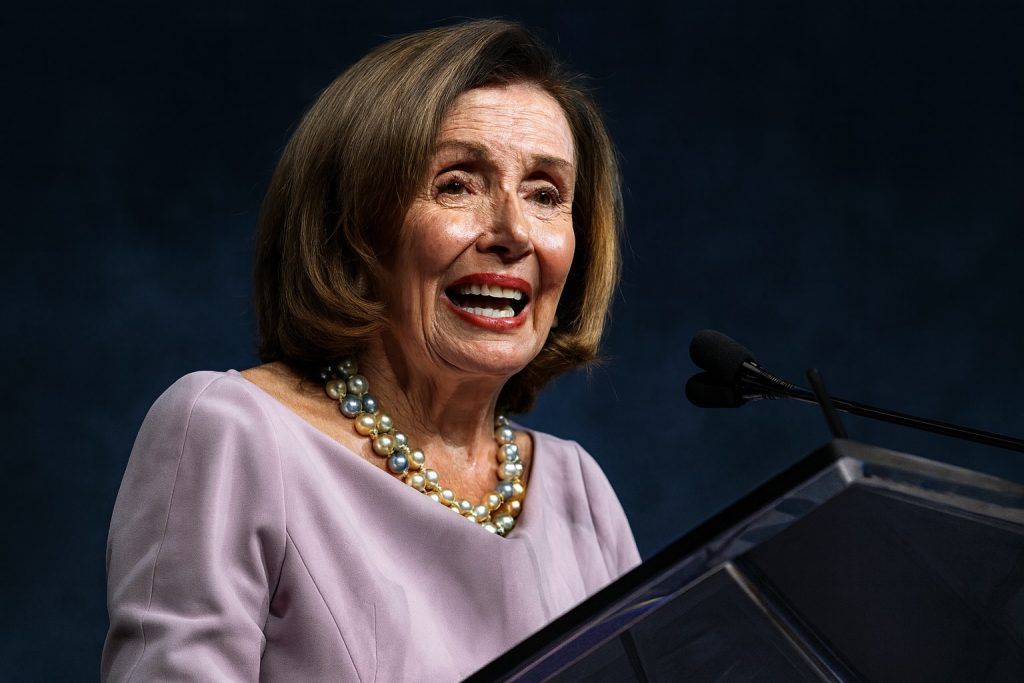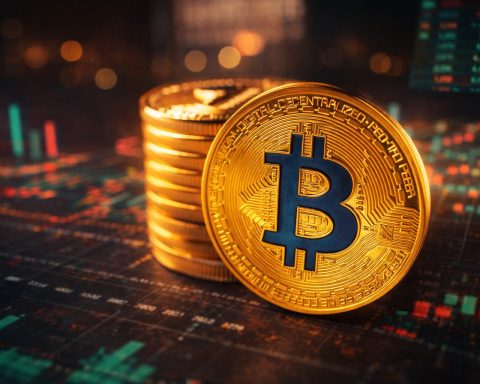- Precious metals at records: Gold surged to a fresh record high around $4,243 per ounce this week [1], while silver hit an all-time peak near $53.60/oz before slightly pulling back [2]. Both haven assets are up dramatically in 2025 – gold by over 60% year-to-date [3] and silver by roughly 70–80% [4], outpacing even gold’s gains.
- Safe-haven frenzy: Investors have flocked to gold and silver amid mounting economic and political uncertainty. Key drivers include expectations of U.S. interest rate cuts, an escalating U.S.-China trade spat, and a prolonged U.S. government shutdown, all of which have fueled demand for safe assets [5] [6]. A weaker dollar and cooling inflation have further boosted the appeal of non-yielding metals as a hedge [7] [8].
- Silver’s supply squeeze: Silver’s rally has been amplified by tight physical supply. Traders report a historic shortage of bullion in major hubs like London, sending silver lease rates (borrowing costs) to multi-decade highs [9] [10]. This supply crunch, alongside robust industrial demand (for solar panels, electronics, etc.), helped propel silver to its record levels.
- Analysts see more upside – with caution: Many experts remain bullish. Bank of America now projects gold could reach $5,000/oz in 2026, and $65/oz silver by 2026 [11] [12]. “Gold could easily continue its upward momentum… north of $5,000 by the end of 2026,” says Phillip Streible of Blue Line Futures [13]. However, there are warnings: technical indicators show both metals in overbought territory [14], and veteran analysts caution that silver is notoriously volatile and prone to sharp corrections [15]. Unlike gold, silver lacks steady central-bank buying, so even a brief pullback in investor flows “could trigger a sharp correction,” Goldman Sachs warns [16].
- Investors pile in: Safe-haven inflows are evident. Global gold ETFs are seeing firm inflows and central banks continue hefty gold purchases [17]. Silver, often called “poor man’s gold,” has attracted record ETF investment (over 90 million ounces added in H1 2025) amid a bit of FOMO among speculators [18]. “Renewed trade frictions…are adding to uncertainty… investors are increasingly turning to gold,” notes Nitesh Shah of WisdomTree, who believes gold’s breakout above $4,200 is likely to hold barring a major shift [19] [20].
Precious Metals Surge to Historic Highs
Gold and silver prices are shattering records as anxious investors rush into safe-haven assets. This week, spot gold blew past the $4,200/oz milestone for the first time ever [21], extending a remarkable rally that’s seen it gain over 60% so far this year [22]. Gold has now notched five consecutive sessions of gains, peaking around $4,243 on Thursday morning (Oct. 16) [23]. Its sister metal silver has been on an even more spectacular tear: spot silver hit $53.60/oz on Tuesday – a new all-time high, finally surpassing the long-standing 1980 and 2011 peaks [24]. Even after a modest dip to about $52.9 on profit-taking, silver remains up roughly 70–80% year-to-date [25] [26], making it one of 2025’s top-performing assets. By comparison, gold’s year-to-date gain is around 56–61% [27] [28], itself a stunning rise that has captivated markets.
This dual surge in precious metals has dramatically narrowed the gold-silver ratio – the number of silver ounces equal in value to one ounce of gold. The ratio now sits near 80:1, its tightest in about a year, as silver outpaces gold [29]. “Silver is a bit of a catch-up trade,” notes Aakash Doshi of State Street, pointing out that silver lagged gold earlier but is now rapidly closing the gap [30]. Indeed, silver’s explosive move – roughly 3.5% jump on Oct. 14 alone – briefly pushed it above the January 1980 Hunt Brothers peak in nominal terms [31] [32]. That 1980 spike (and a similar one in 2011) ended in brutal crashes, a history not lost on seasoned traders. “Silver can be wildly volatile, prone to boom-and-bust cycles more than gold,” one long-time market watcher warns [33]. For now, though, both metals are basking in an upswell of demand as investors seek shelter from gathering economic storms.
Flight to Safety: Fed Pivot, Trade War & Shutdown Fears
Several potent factors have converged to drive this safe-haven frenzy. Foremost is the shifting outlook for U.S. interest rates. With inflation cooling and growth showing signs of strain, markets are betting that the Federal Reserve will cut rates imminently – possibly at its meeting later this month, and again in December [34]. Traders currently peg the odds of an October rate cut above 95% [35]. Such expectations have been a key fuel for gold’s rise [36]. Gold and silver, which yield no interest, tend to shine when rates peak or fall, as the opportunity cost of holding them drops. “Non-yielding gold typically performs well in a low interest-rate environment,” Reuters notes [37]. The mere prospect of easier Fed policy has weakened the dollar this year and sent real bond yields down from their highs – a favorable backdrop for precious metals [38] [39].
Geopolitical and economic uncertainty has added further impetus. In recent days, the long-simmering trade conflict between the U.S. and China dramatically flared up again. President Donald Trump threatened to slap 100% tariffs on Chinese imports, breaking a fragile truce [40]. Beijing responded with tit-for-tat measures (including curbs on exports of critical rare earth minerals), rekindling fears of a trade war escalation. “Renewed trade frictions are adding to uncertainty across global supply chains…investors are increasingly turning to gold,” explains Nitesh Shah, commodity strategist at WisdomTree [41]. The trade spat has dominated market focus this week [42] and is cited as a major reason investors are seeking the safety of hard assets.
At the same time, the U.S. is in the throes of a federal government shutdown – now entering its third week with no budget deal in sight [43]. The shutdown adds another layer of risk, threatening to sap economic growth (the U.S. Treasury estimates it’s costing about $15 billion per week in lost output) [44]. The political dysfunction and uncertainty around government funding have “boosted bullion’s appeal,” notes Carlo De Casa of Swissquote, since a shutdown implies broader instability [45] [46]. Indeed, back in late September when a shutdown loomed, traders preemptively piled into gold and silver “on fears of a potential U.S. government shutdown” [47].
Beyond U.S.-centric issues, a panoply of global risks has stoked safe-haven demand. Europe saw political turmoil recently (for example, a government collapse in France earlier in October rattled markets) [48]. In Asia, geopolitical tensions – from conflict in the Middle East to the ongoing war in Ukraine – have unsettled investors and driven a “flight to safety.” Reuters reported that Middle East flare-ups and European crises “stoked demand” for precious metals in recent weeks [49]. Against this backdrop of uncertainty, central banks have been voracious buyers of gold as they diversify reserves. Robust central-bank demand (on pace for one of the biggest annual purchases in decades) and steady inflows into gold ETFs have provided structural support to the gold market [50]. “Steady central bank purchases, firm ETF inflows, U.S.-China trade tensions and the prospect of lower rates are providing structural support,” says Phillip Streible of Blue Line Futures [51] [52]. It’s truly a “perfect storm” of drivers – economic worries, political strife, and monetary shifts – all pushing investors into precious metals [53].
Silver Outshines Gold – and Shows Its Wild Side
While gold’s rally has grabbed headlines, silver’s performance has been even more eye-popping. The grey metal often plays high-beta “catch up” to gold – rising faster in percentage terms during bull runs – and 2025 is proving that pattern true [54] [55]. Silver has surged roughly 70+% this year [56], and its newly attained record above $53/oz marks the first time in 14 years it’s ventured into uncharted territory. Twice before (1980 and 2011) silver approached the ~$50 level only to crash violently afterward [57]. That history has many analysts urging caution now that the $50 psychological barrier has been breached. “Silver can be wildly volatile, prone to boom-and-bust cycles more than gold,” one veteran market observer warns, noting that previous spikes led to “brutal busts.” [58]
Several factors unique to silver are magnifying its moves. Unlike gold, which benefits from central banks steadily accumulating reserves, silver’s demand is driven mainly by investors and industry. This means silver’s price can swing harder on changes in sentiment. Currently, investor sentiment is extremely bullish – even bordering on “FOMO” (fear of missing out), as traders chase the momentum [59]. Global silver ETF holdings hit record highs after absorbing tens of millions of ounces this year [60]. At the same time, industrial consumption for silver remains robust, thanks to its use in electronics, solar panels, electric vehicles and more. In India, for example, silver demand for jewelry and festivals is booming, and local prices hit record highs in rupee terms as well [61].
Critically, the physical silver market has tightened dramatically. 2025 is expected to be the fifth consecutive year of a global silver supply deficit, meaning usage outstrips new supply [62]. Inventories in key trading hubs are dwindling. In London – a major vaulting center – a shortage of deliverable silver bars has forced some traders to take extreme measures. Dealers have reportedly been airlifting silver bullion from London to New York to meet delivery needs [63]. Silver lease rates (the cost to borrow physical silver short-term) spiked to ~30-40%, an “eye-watering” level that signals how scarce immediate supply has become [64] [65]. This kind of supply squeeze can turbocharge prices in the short term, as buyers scramble to secure metal. “The market is structurally tight…global supply is struggling to keep up with surging demand,” observes one analyst, who notes that such conditions create a strong tailwind for silver’s price [66] [67].
The flip side of this tight-market surge is that silver could also see outsized swings downward if sentiment turns. Analysts point out that no central bank “put” exists for silver – governments don’t step in to buy if price falls – so the metal lacks a stabilizing buyer of last resort [68]. Goldman Sachs strategists cautioned recently that if the torrent of investor inflows into silver even pauses, the market’s shallow liquidity means prices could “snap back” with a steep correction [69]. We’ve seen a taste of that volatility: on profit-taking or any calming news, silver often retreats faster than gold. After Tuesday’s record high, silver quickly dipped by about 3% as some traders took profits [70] (gold, by contrast, only eased ~1% from its peak). Such gyrations are a reminder that while silver is delivering big rewards in this rally, it also carries higher risk. “This rally has legs in our view, but a near-term correction would be healthier for a longer-term uptrend,” says Suki Cooper, head of commodity research at Standard Chartered [71], suggesting that a breather might ultimately prolong the bull market rather than end it.
How High Can They Go? Outlook and Forecasts
With gold and silver at record levels, the natural question is: what’s next? Many on Wall Street believe the rally could run further, though perhaps not in a straight line. Major banks have been hiking their forecasts for precious metals in light of 2025’s momentum. Bank of America and Societe Generale now both foresee gold reaching $5,000/oz by 2026, implying another ~18% upside from current prices [72]. In fact, UBS analysts recently said gold might hit $4,200 by year-end 2025 [73] – a target already essentially met in mid-October. Some are even more bullish: “We could see prices north of $5,000 by the end of 2026,” predicts Phillip Streible, citing supportive fundamentals [74]. This thesis is underpinned by expectations of easier monetary policy, continued geopolitical risks, and strong institutional demand. However, stretching the rally further may require new catalysts or sustained investor interest. “To get to $5,000 in 2026, the market would likely need to see physical demand hold steady but a further upswing in financial demand for gold,” notes Aakash Doshi, State Street’s head of gold strategy [75]. In other words, central banks and jewelry buyers alone might not push gold to that next milestone – it may take another wave of investment allocations to gold.
For silver, predictions are equally optimistic, if not more so. Bank of America projects silver will average around $65/oz in 2026, roughly 25% above current prices [76]. Such levels would be unprecedented, but after this year’s big breakout, banks are adjusting to the possibility that silver’s old nominal ceiling (~$50) could be left far behind. Some analysts point to silver’s dual role as an industrial metal: if a global economic recovery (or green-energy boom) boosts industrial offtake while investors continue to seek safety, silver could enjoy a “best of both worlds” demand scenario. That said, virtually all experts urge caution about silver’s volatility. Even bulls concede that steep pullbacks are likely along the way. Technical charts show gold and silver as overbought in the short term (their relative strength indexes are above 80) [77], which has in the past preceded at least temporary corrections. Standard Chartered now expects gold to average about $4,488 next year – lower than current prices – precisely because a mid-cycle correction could occur before the uptrend resumes [78] [79].
In the nearer term, much will depend on how the macroeconomic dominos fall. A faster resolution to the U.S. shutdown or a de-escalation of the U.S.-China trade rift could cool some immediate demand for safe havens. Conversely, any surprise shocks – be it a worsening conflict abroad or signs of financial stress in equity markets – could spur the next leg up. Some traders worry that soaring gold and silver hint at deeper market fears. Peter Grant of Zaner Metals notes that along with the tariff war and de-dollarization trend, the current environment of political mistrust is a breeding ground for $5,000 gold by next year [80]. His scenario: if Washington and Beijing remain at odds and the Fed indeed shifts to cutting rates, gold could reach $5,000/oz by mid-2026 and silver would likely follow suit proportionally [81].
For now, the consensus is that fundamentals remain supportive. “The uptick in U.S.-China trade tensions, the ongoing shutdown, and expectations of further Fed easing are all supporting gold,” says Peter Grant [82]. As long as those pillars remain – and this extraordinary “everything rally” in precious metals retains momentum – the bulls have the upper hand. Still, after such a dizzying climb, new investors would be wise to buckle up. Silver’s “thin market” means it “could make big moves in both directions,” as Goldman cautions [83]. Gold, too, could see swings if rate policy surprises or if investors rotate back into riskier assets. In short, 2025’s precious metals boom has further to run by many accounts, but it won’t be a smooth ride. As one commodities chief quipped, “this rally has legs…but don’t be surprised if it stops to catch its breath” [84].
Sources: Wall Street Journal [85]; Reuters [86] [87] [88] [89] [90] [91]; Forbes [92]; TechStock² (ts2.tech) [93] [94] [95]; FXStreet [96]; The Economic Times [97]; Mining.com [98].
References
1. www.reuters.com, 2. www.reuters.com, 3. www.reuters.com, 4. ts2.tech, 5. www.reuters.com, 6. www.reuters.com, 7. ts2.tech, 8. ts2.tech, 9. ts2.tech, 10. ts2.tech, 11. www.reuters.com, 12. ts2.tech, 13. www.reuters.com, 14. www.reuters.com, 15. ts2.tech, 16. ts2.tech, 17. www.reuters.com, 18. ts2.tech, 19. www.reuters.com, 20. www.reuters.com, 21. www.reuters.com, 22. www.reuters.com, 23. www.reuters.com, 24. www.reuters.com, 25. ts2.tech, 26. www.fxstreet.com, 27. www.reuters.com, 28. www.reuters.com, 29. www.fxstreet.com, 30. ts2.tech, 31. ts2.tech, 32. ts2.tech, 33. ts2.tech, 34. www.reuters.com, 35. www.reuters.com, 36. ts2.tech, 37. www.reuters.com, 38. ts2.tech, 39. ts2.tech, 40. www.reuters.com, 41. www.reuters.com, 42. www.reuters.com, 43. www.reuters.com, 44. www.reuters.com, 45. ts2.tech, 46. ts2.tech, 47. ts2.tech, 48. ts2.tech, 49. ts2.tech, 50. www.reuters.com, 51. www.reuters.com, 52. www.reuters.com, 53. ts2.tech, 54. ts2.tech, 55. ts2.tech, 56. ts2.tech, 57. ts2.tech, 58. ts2.tech, 59. ts2.tech, 60. ts2.tech, 61. ts2.tech, 62. ts2.tech, 63. ts2.tech, 64. ts2.tech, 65. ts2.tech, 66. ts2.tech, 67. ts2.tech, 68. ts2.tech, 69. ts2.tech, 70. www.reuters.com, 71. www.reuters.com, 72. www.reuters.com, 73. www.reuters.com, 74. www.reuters.com, 75. www.reuters.com, 76. ts2.tech, 77. www.reuters.com, 78. www.reuters.com, 79. www.reuters.com, 80. www.reuters.com, 81. www.reuters.com, 82. www.reuters.com, 83. ts2.tech, 84. www.reuters.com, 85. finance.yahoo.com, 86. www.reuters.com, 87. www.reuters.com, 88. www.reuters.com, 89. www.reuters.com, 90. www.reuters.com, 91. www.reuters.com, 92. www.forbes.com, 93. ts2.tech, 94. ts2.tech, 95. ts2.tech, 96. www.fxstreet.com, 97. economictimes.indiatimes.com, 98. ts2.tech










